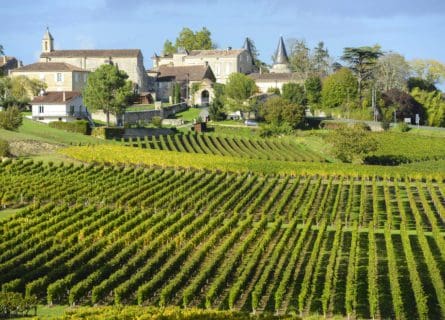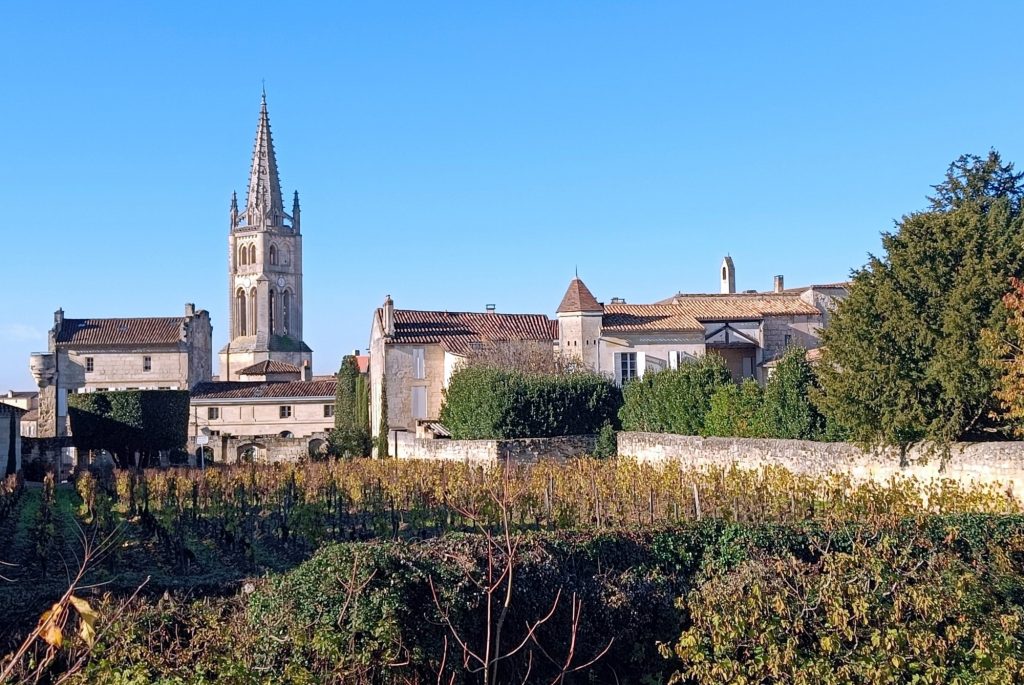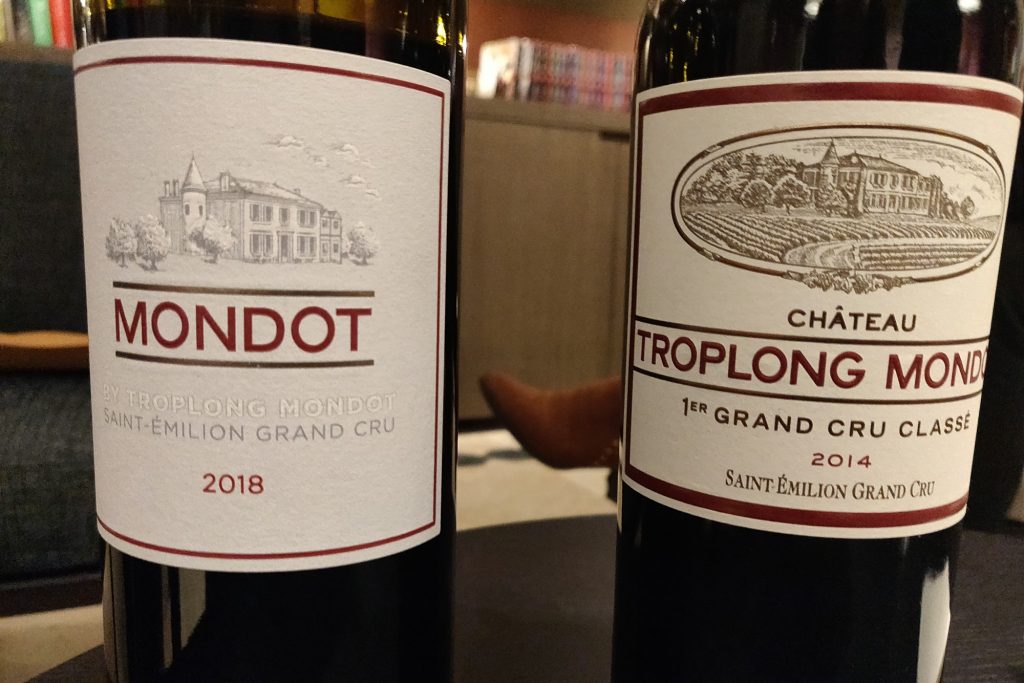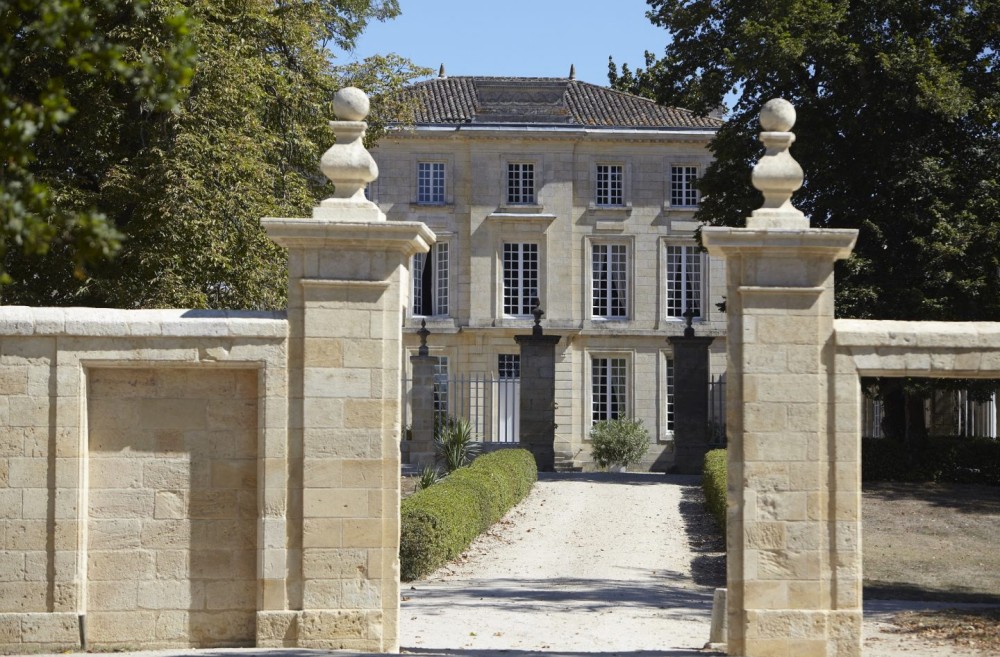
Bordeaux: Best Winery Experiences
September 27, 2019
Uncork Bordeaux's Best Winery Experiences: Explore Top Vineyards & Tastings for Wine Enthusiasts! 🍷Plan your visits today!
Known as the prettiest village in Bordeaux, medieval St Emilion is the ‘jewel of stone in a setting of vines’. It is home to old limestone churches and underground catacombs stretching about 70 hectares under the village.
Discover more about Bordeaux Wine Classifications

Having left his homeland of Brittany in the 8th century, Emilion, a Breton monk, ended up living as a hermit in a cave in Ascumbas. This placement was later renamed St Emilion in his honor.
St Emilion’s namesake spent his last days on a limestone plateau—limestone is a key element of the terroir—where the top Chateaux of St Emilion are located. In addition to the limestone, the vineyards of the St Emilion appellation benefit from chalk-clay over sandstone, blue clay, and sandy and gravel soils.
But compared to the flat, gravel soils of Cabernet Sauvignon-dominant vineyards of the Medoc, St Emilion, on Bordeaux’s right bank, could not be more distinctive: its cooler, concave valleys and vineyards are the home of Merlot-led blends, accounting for 75 percent of grapes.
St Emilion’s wines gained prominence in the mid-20th century through its unique Grands Crus Classés Chateaux classification, which has played a key role in maintaining the region’s reputation and quality.
Keen to emulate the success of the left bank 1855 classifications of the Medoc and Sauternes, which had propelled the prestige and reputation of Chateaux and their wine and land prices, work on a classification for St Emilion started in 1930.
Still, it did not materialize until 1955, when France’s appellations governing body, Institut National de l’Origine et de la Qualité INAO, agreed to oversee its creation through a decree published on October 7th, 1954.
St Emilion published its first classification on June 16th, 1955, becoming the only right bank appellation to classify its Chateaux. However, unlike the rival 1855 classification, which ranked properties according to prices set by local merchants, this classification depended on submitted requests for inclusion.
The ranking of Grands Crus Classés chateaux would be based on a tasting of ten vintages from the estate in question rather than market value. The move to reassess the classification every ten years set itself apart, too. A decree amended the initial classification in August and October 1955, and the final list received approval three years later, in 1958. (Some refer to it as the 1954 or 1958 classification, but the most widely used date is 1955).
The St Emilion Classification established two quality levels: Premiers Grands Crus Classés (PGCC), divided into an A tier of top chateaux and a B tier of lesser-ranking ones. A secondary category is called Grands Crus Classés (GCC) Chateaux. Initially, the renowned estates of Ausone and Cheval Blanc were classified at the top level of group A. Twelve properties were ranked as Premier Grands Crus Classés and 63 as Grands Crus Classés, with many châteaux maintaining this status through many future classifications.
Before addressing the criteria of the St Emilion classification, it is essential to say that all producers in St Emilion – around 600 Chateaux – can call themselves and label their wines Grand Cru. These wines, however, are not part of the Grands Crus Classés classification. The word Classé is the key difference. Grand Cru wine is not classified – something Benjamin Lewin, a Master of Wine, effectively says undermines the concept of ‘Grand Cru.’

Terroir: The notion of ‘terroir’ is generally sacrosanct in France; a wine’s characteristics and quality are primarily or exclusively due to its terroir: its geographical environment and inherent natural and human factors. However, terroir, including detailing the characterization of the estate based on the property, the homogeneity of vineyards, and topographical and geo-pedological analysis, accounts for 20% of points for the Grand Cru Classé score. For the Premier Grand Cru Classé 2022 classification, terroir accounts for just 10% of the grade.
An independent tasting panel blind tastes wines presented during the classification process. Tasting accounts for 50% of the overall grade required for the 2022 classification, a significant jump from 30% of points in the 2012 classification.
To be classified as Grands Crus Classés (GCC), a minimum score of 14 out of 20 is required, and for Premiers Grands Crus Classés (PGCC), a minimum score of 16 out of 20 is necessary, discounting the lowest grade in both cases. A score of 17 out of 20 is required to obtain the top group ‘A’ level, based on exceptional wine, aging ability, and reputation, as determined by the judging commission.
Chateaux critics and pundits have questioned why GCC and PGCC rules (see below) differ.
The final score must be at least 16/20.
The final score must be at least 14/20.
Explore the complete list of wineries from the 2022 classification
Since 1958, the region’s wines have been reclassified regularly—and not each decade as planned—in 1969, 1986, 1996, 2006, 2012, and 2022. In 2006, five châteaux were removed from the classification, and lawsuits were subsequently filed. The ruling was declared invalid, and the 1996 classification was reinstated.
For the 2012 classification, the INAO was determined to reform procedures and quell legal unrest and complaints from producers.
For the first time, the INAO outsourced the tastings and site inspections to wine professionals from other regions to underline the independence of the procedures. ‘Independent’ Quality Classification control companies were contracted; Qualisud handled the tastings, while Bureau Veritas would visit the estates. (In 2022, Bureau Veritas oversaw both tastings and visiting estates, even though it had no history of expertise in wine tasting)
The new classification in 2012 enlarged the percentage of St Emilion properties classified to 24%, up from 16% in 1996. Chateau Angelus and Pavie were promoted to Group A.
Over the past two St Emilion classifications (2012 and 2022), half of the classified chateaux have had their status changed, showing how the St Emilion classification is by no means static. In 2022, no Chateaux were demoted, but there were 16 promotions: 14 estates received the Premier Grands Crus Classés award, including the top two ‘A’ level estates, and 71 Chateaux were recognized as Grands Crus Classés.
Accusing the St Emilion Wine Council, the INAO, and Bureau Veritas of corruption involving ‘secret and variable procedures,’ Chateau Croque Michote refused to apply for the 2012 classification.
Its reputation was undermined again in 2021 when the two top producers, Cheval Blanc and Chateau Ausone, announced they would not participate in the 2022 Classification. These two renowned producers complained that secondary elements are given too much prominence in the classification criteria compared to judging the quality of wine, terroir, and history.
Chateau Angelus notoriously withdrew from the 2022 classification, months after a court in Bordeaux found co-owner Hubert de Boüard guilty of ‘unlawful bias and influence’ on October 25th, 2021, by ‘promoting his friends’ during the drawing up of the criteria of the classification. The court fined De Boüard €60,000. At the time of the 2012 classification, De Boüard was a member of the national committee of the INAO, which oversees appellations and the classification, and president of the Grands Crus section of the St.-Emilion wine syndicate (ODG St.-Emilion).
Also in 2022, in another legal battle, Chateaux Tour St. Christophe and Croix de Labrie, whose applications had been rejected due to their inclusion of newly acquired land, successfully appealed to overturn this decision.
Meanwhile, Chateau La Gaffeliere, another historic producer, withdrew its classification application over concerns that it would be demoted as a Premier Grand Cru Classé.

After their promotion to the A group of top Grand Crus Classe in 2012, Chateau Pavie and Chateau Angélus saw instant price hikes. The 2012 Angélus was released at 30% more than the 2011 en primeur, while Pavie went up 58%.
In June 2023, Chateau Figeac increased its en primeur price per bottle ex-négociant by 55.6% to €252 after being promoted to A group of top Grand Crus Classe in 2022. That said, historic estates such as Cheval Blanc and Ausone, which have exited the classification, have not seen their prices affected. Meanwhile, some of the most expensive Bordeaux wines, like Petrus (100% Merlot from Pomerol, an appellation adjacent to St Emilion), are not classified at all. Beyond wine, the land prices of properties skyrocket due to classification.
Climate Change and rising temperatures have led to increased alcohol levels in St Emilion wines. Sugar levels (which turn to alcohol in fermentation) are rising, particularly for Merlot grapes, which develop more sugar levels at ripeness than other Bordeaux grapes. Saint Emilion wines are now more likely to be stronger than 14% Avb. Some producers are increasingly planting Cabernet Franc and reducing the number of Merlot vines.
Producers must first present a dossier about their estate and wines to apply for classification status, including listing adopted environmental measures. Since the 2019 vintage, all viticulture in St Emilion must be sustainable. Producers using ‘conventional’ viticulture cannot label their wines as St Emilion wines; herbicides (weedkillers) are banned entirely. However, there are no minimum environmental standards in the classification, something which may change in the future.
Indeed, reforms to the St Emilion classification and the promotion and demotion of Chateaux over the years show how it’s a classification by no means set in stone. Despite losing key historic chateaux, a majority continue to use the classification system, which is a reference point for distinguishing producers from one another, providing economic benefits and the potential and impetus of lesser-known Chateaux (those with means) to up their game as well as showing the value of heritage.
The Saint-Emilion classification may be the only classification in Bordeaux that includes the notion of terroir and tastings with production linked to a specific piece of land. But, despite reforms, many producers in St Emilion have publicly said that the quality of wine and terroir should be more regarded in the classification criteria.
Stephane Derononcourt, a leading oenologist, notoriously said in 2012:
“There is no longer a terroir classification. It’s pure marketing. If you have a visitor parking lot, that’s two extra points; if your hostess is really hot, that’s another two points.“
In the 2022 classification, the weight attributed to judging wine via tastings has increased. Yet, oddly, the quality of terroir has more significance for a (GCC) Grand Cru Classé (20% of score) than a higher-ranked Premier Grand Cru Classé (PGCC) estate (10% of score—see criteria rules above).
While reputation, promotion, and distribution represent 20% for the Grands Crus Classés, they account for 35% of a property’s score for Premier Grand Cru Classé status and are much more valued than terroir. That said, unlike the classifications in 2006 and 2012, the 2022 classification has not prompted any appeals or legal battles. There were no demotions in 2022, which the INAO has said shows how estates have improved their performance.
Further reforms by 2032 would not come as a surprise. Like a country that seeks to maintain its monarchy (seen by some as an anachronism), the classification’s rule-makers will continue to adopt reforms to ensure the system’s survival.
A passionate advocate of terroir and environmental viticulture, François D’Espagne, owner of Chateau Corbin D’Espagne and President of the Association of Grands Crus Classés, says that rather than the controversies over classification, he is more concerned with ensuring the ‘maintenance of the social tissue of St Emilion’; Over recent years ownership of estates has changed hands, with the number of owners and vignerons, who live on estates and work exclusively from wine production, dwindling.
Other than my research and experience, here are some references used:
If you would like us to customize an exclusive luxury tour, contact us and let us know your travel plans. We offer luxury food and wine tours for private groups of a minimum two guests. In addition, all of our private, chauffeured tours are available year-round upon request.

